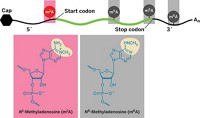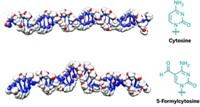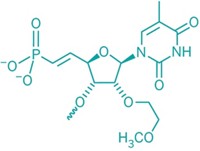Advertisement
Grab your lab coat. Let's get started
Welcome!
Welcome!
Create an account below to get 6 C&EN articles per month, receive newsletters and more - all free.
It seems this is your first time logging in online. Please enter the following information to continue.
As an ACS member you automatically get access to this site. All we need is few more details to create your reading experience.
Not you? Sign in with a different account.
Not you? Sign in with a different account.
ERROR 1
ERROR 1
ERROR 2
ERROR 2
ERROR 2
ERROR 2
ERROR 2
Password and Confirm password must match.
If you have an ACS member number, please enter it here so we can link this account to your membership. (optional)
ERROR 2
ACS values your privacy. By submitting your information, you are gaining access to C&EN and subscribing to our weekly newsletter. We use the information you provide to make your reading experience better, and we will never sell your data to third party members.
Biological Chemistry
Another Role for RNA
Molecular Biology: Short RNA duplexes turn on gene expression
by Celia Henry Arnaud
February 5, 2007
| A version of this story appeared in
Volume 85, Issue 6

IN ADDITION TO SILENCING gene expression, short pieces of double-stranded RNA may be able to activate gene expression.
To activate gene expression, David R. Corey, Bethany A. Janowski, and coworkers at the University of Texas Southwestern Medical Center, Dallas, use RNA duplexes that target a portion of genomic DNA upstream from the site where gene transcription begins (Nat. Chem. Biol., DOI: 10.1038/nchembio860). The effect requires that the RNA duplex's sequence be complementary to that of the targeted genomic DNA. Although structurally similar to the RNA used in RNA interference, these RNA duplexes target DNA instead of messenger RNA.
The researchers first saw inklings of the effect when they were studying similar DNA-targeting RNAs that reduce the expression of the progesterone receptor (C&EN, Aug. 8, 2005, page 10). Some of those RNAs increased gene expression rather than silencing it, but the cell line they were using at the time produced so much progesterone receptor to begin with that the effect was not obvious. In a different cell line with low basal levels of progesterone receptor, they were able to use the RNAs to generate an 18-fold increase in the concentration of receptor.
They don't yet know how the process works, but Corey suspects that it takes advantage of a mechanism that cells already use. "This worked so easily that I can't believe this isn't a mechanism that's already in place," he says. He doubts that the RNAs can act as transcription factors on their own. "The role of protein transcription factors is well-established and ubiquitous. RNA might supplement them," he says.
Corey envisions these RNA molecules being used as research tools and eventually even as therapeutics. "They open up possibilities that were not present from either antisense oligonucleotides or traditional small interfering RNAs, which are very good at silencing gene expression," he says. "If you're working in a therapeutic system and you would like to have a gene upregulated, this might be the way to do it." Rajvir Dahiya and coworkers at the University of California, San Francisco, have seen similar effects in other types of cells (Proc. Natl. Acad. Sci. USA 2006, 103, 17337).
Aseem Z. Ansari, a biochemist at the University of Wisconsin, Madison, who designs artificial transcription factors, is enthusiastic. He expects that the reports "will provoke much activity in this area and will likely provide a tool to activate target genes."







Join the conversation
Contact the reporter
Submit a Letter to the Editor for publication
Engage with us on Twitter